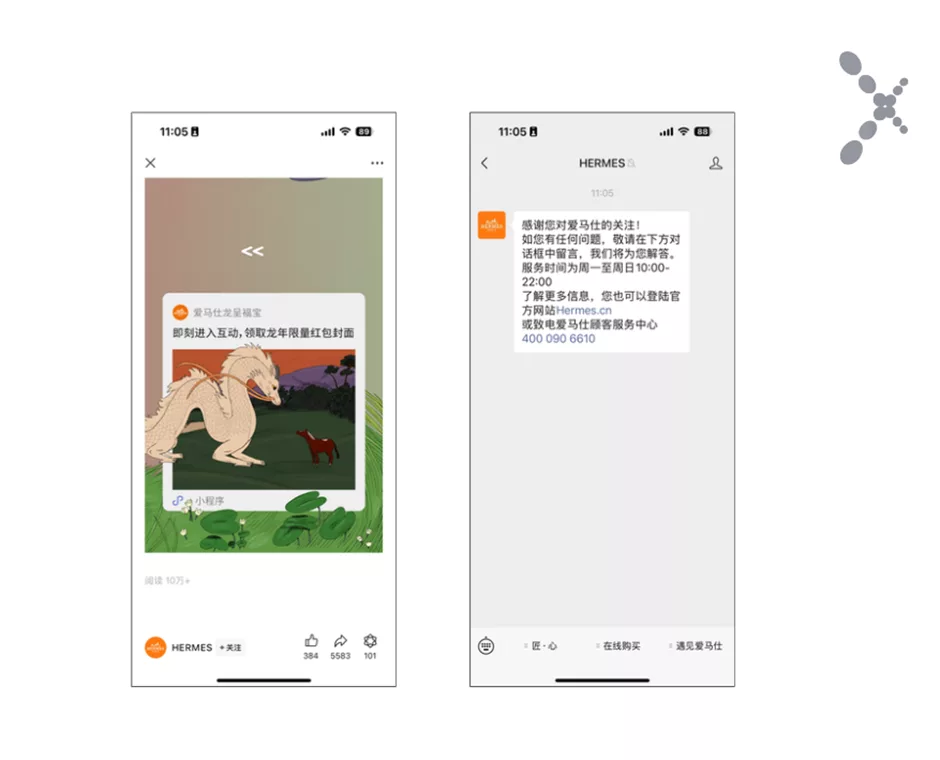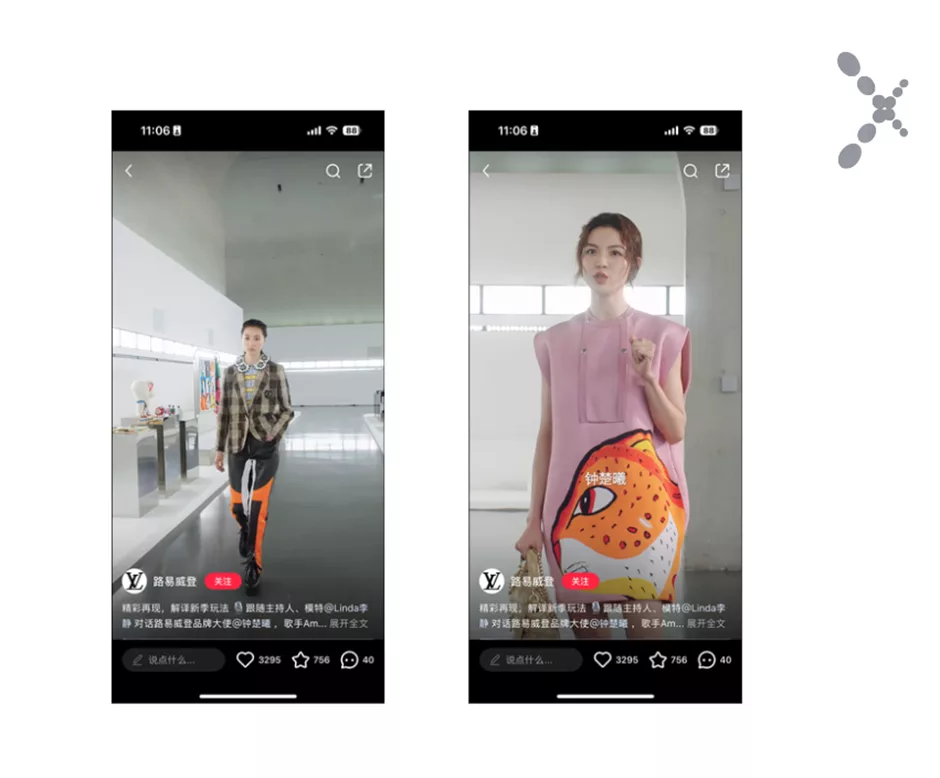The Chinese market holds immense appeal for international luxury brands. As China’s economy rapidly advances and the middle class rises, Chinese consumers become pivotal players in the global luxury landscape. Many international luxury brands strategically incorporate Chinese cultural elements into their product designs and marketing campaigns. This approach allows brands to stand out in a highly competitive market and deepens emotional connections with Chinese consumers, enhancing cultural resonance and fostering long-term brand loyalty.
Here are some case studies of international luxury brands that adapted their strategy in China by successfully integrating Chinese elements, such as cultural symbols, colours, and traditional holidays.
1. Gucci’s Chinese New Year Collection
In 2023, Gucci launched a series of products themed on the Year of the Dragon in the Chinese Zodiac. This collection featured dragon-inspired designs and used traditional festive colours such as Chinese red and gold, evoking a vibrant festive atmosphere. By launching these limited-edition items during Chinese New Year, Gucci successfully captured the attention of many Chinese consumers.

Key Success Factors:
- Cultural Resonance: Gucci deepened its emotional bond with Chinese consumers by embracing traditional Chinese festivals and cultural symbols, resonating strongly with local values.
- Limited Editions: The collection’s exclusivity and rarity heightened its allure, drawing consumers with its unique offerings.
2. Bottega Veneta’s Chinese New Year Campaign
Bottega Veneta‘s “Watching the First Sunrise with You” campaign beautifully captures the transition from the old year to the new, symbolising fresh starts and the value of shared moments with loved ones. By intertwining the traditional theme of reunion with the anticipation of the first dawn, the campaign beautifully captures the cultural significance of the New Year and resonates deeply with the aspirations of modern Chinese society.
Key Success Factors:
- Localised Marketing: The campaign was meticulously designed to reflect Chinese cultural themes, creating a meaningful connection with the local audience.
- Emotional Engagement: By focusing on family and new beginnings, Bottega Veneta tapped into the emotional essence of Chinese New Year, demonstrating a keen understanding of contemporary Chinese values and fostering lasting brand loyalty.

3. Hermès’ WeChat Ecosystem Marketing:
During Chinese New Year, Hermès effectively leveraged the WeChat mini-program to engage directly with consumers through interactive features like exclusive red envelope covers. This strategy not only encouraged users to interact with the brand’s mini-program but also strengthened customer loyalty through personalised communication.
Key Success Factors:
- WeChat Ecosystem Leverage: Hermès capitalised on WeChat’s expansive ecosystem, enabling rapid brand dissemination and meaningful engagement with a broad and connected audience.
- Enhanced User Engagement: By offering personalised interactions and rewards, Hermès successfully maintained customer relationships and loyalty. The creative use of cover art and social value on WeChat further reinforced the brand’s marketing and communication objectives.

4. Louis Vuitton’s Digital and Cultural Integration
On April 21, 2024, Louis Vuitton hosted a record-breaking live shopping event on Xiaohongshu, attracting over 470,000 viewers. The event featured a 15-minute runway show followed by a 100-minute session named “Resee”, where the brand used high-definition cameras and precise lighting to showcase product details and textures, along with models displaying items and Key Opinion Leaders (KOLs) offering commentary. This immersive live broadcast allowed viewers to experience the products as if in person and instantly book exclusive in-store experiences via Xiaohongshu’s Hourly Shop, offering an immersive blend of online and offline shopping.
Key Success Factors:
- High-Tech Live Shopping: Merging various live-streaming formats delivers a new, immersive digital shopping experience, offering a fresh and engaging way for consumers to interact with products.
- KOL Endorsement: XiaoHongShu attracts China’s most fashion-forward consumers, and leveraging influential KOLs amplifies product visibility and consumer insight. This collaboration with KOLs boosted Louis Vuitton’s brand presence and audience connection.

Conclusion
By incorporating Chinese cultural elements and leveraging local digital platforms, international luxury brands are meeting Chinese consumers’ aesthetic and cultural preferences and securing a competitive edge in the market. As China’s market importance continues to grow, more brands are expected to adopt similar strategies to achieve greater success.
Contact our experts to learn more about the best strategies to expand into the Chinese market.





